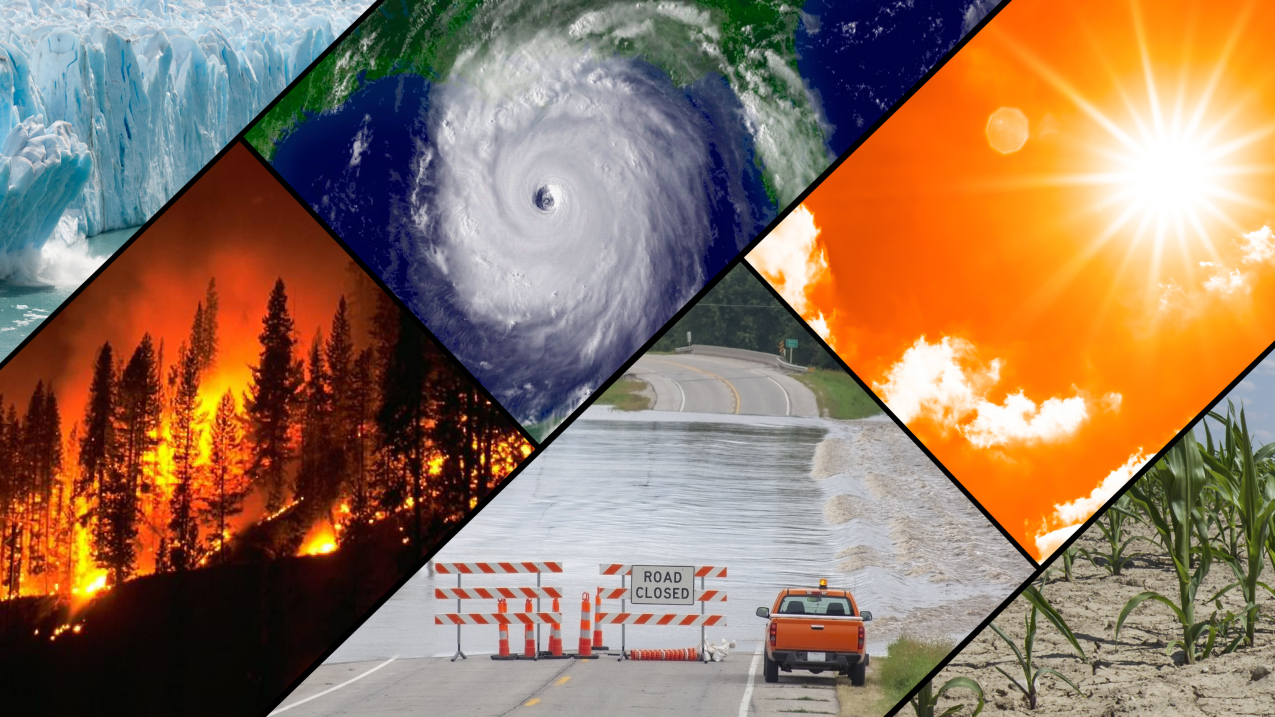Global Warming affect Weather Patterns

Global warming significantly affects weather patterns in several ways, leading to more extreme and unpredictable weather events. Here are the key impacts:
-
Increased Temperature and Heatwaves:
- Rising Average Temperatures: Global warming leads to higher average temperatures globally, contributing to more frequent and intense heatwaves.
- Record High Temperatures: Many regions experience unprecedented high temperatures, which can stress human health, agriculture, and ecosystems.
-
Changes in Precipitation Patterns:
- Altered Rainfall Distribution: Global warming changes the distribution and intensity of rainfall, leading to wetter conditions in some areas and drier conditions in others.
- Increased Heavy Rainfall Events: Warmer air holds more moisture, resulting in more intense and frequent heavy rainfall and storms, which can cause flooding.
-
More Intense and Frequent Extreme Weather Events:
- Tropical Storms and Hurricanes: Warmer ocean temperatures can fuel more powerful hurricanes and typhoons, increasing their intensity, duration, and rainfall.
- Droughts and Wildfires: Higher temperatures and altered precipitation patterns can lead to prolonged droughts, increasing the risk of wildfires and stressing water resources.
-
Shifts in Seasonal Weather Patterns:
- Earlier Springs and Later Winters: Warmer temperatures can cause earlier onset of spring and delayed onset of winter, disrupting ecosystems and agricultural cycles.
- Changes in Snow and Ice Patterns: Reduced snowpack and earlier melting of ice can impact water supplies and ecosystems dependent on seasonal meltwater.
-
Impact on Ocean Currents and Weather Systems:
- Disruption of Ocean Circulation: Warming can alter ocean currents like the Gulf Stream, which influence weather patterns over large regions, potentially leading to changes in climate and weather extremes.
- Increased Sea Surface Temperatures: Warmer seas contribute to more intense storms and altered weather patterns, including changes in the frequency and distribution of tropical storms.
-
Sea Level Rise and Coastal Impact:
- Coastal Flooding: Rising sea levels, due to melting polar ice and thermal expansion of seawater, increase the risk of coastal flooding during storms.
- Erosion and Habitat Loss: Higher sea levels and stronger storm surges lead to increased coastal erosion and loss of habitats for both humans and wildlife.
-
Changes in Atmospheric Circulation:
- Jet Stream Alterations: Global warming can cause changes in the jet stream, leading to more persistent weather patterns, such as prolonged periods of heat, cold, drought, or heavy rainfall.
- Increased Weather Variability: Changes in atmospheric circulation patterns can lead to greater variability in weather, making it more difficult to predict and prepare for weather events.
In summary, global warming leads to a cascade of effects on weather patterns, increasing the frequency, intensity, and unpredictability of weather events. This has significant implications for ecosystems, human health, infrastructure, and economies, necessitating adaptive measures and mitigation efforts to address the changing climate.
Thank you,
